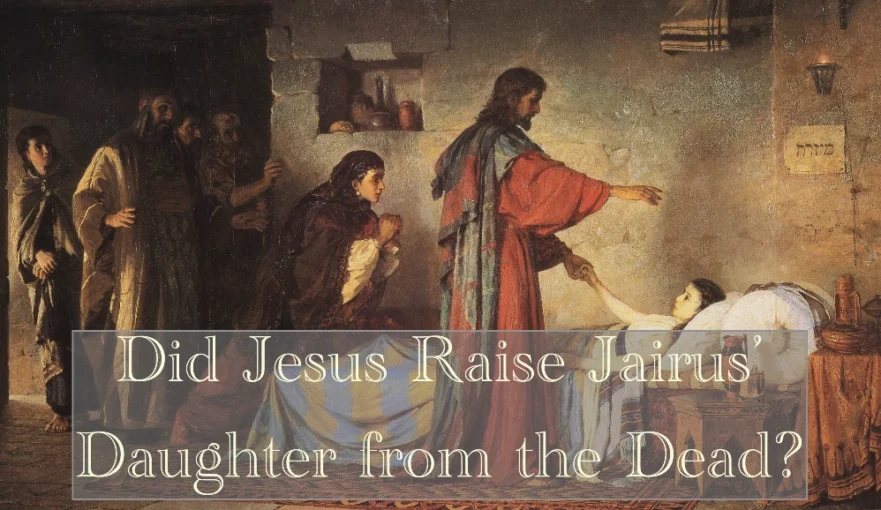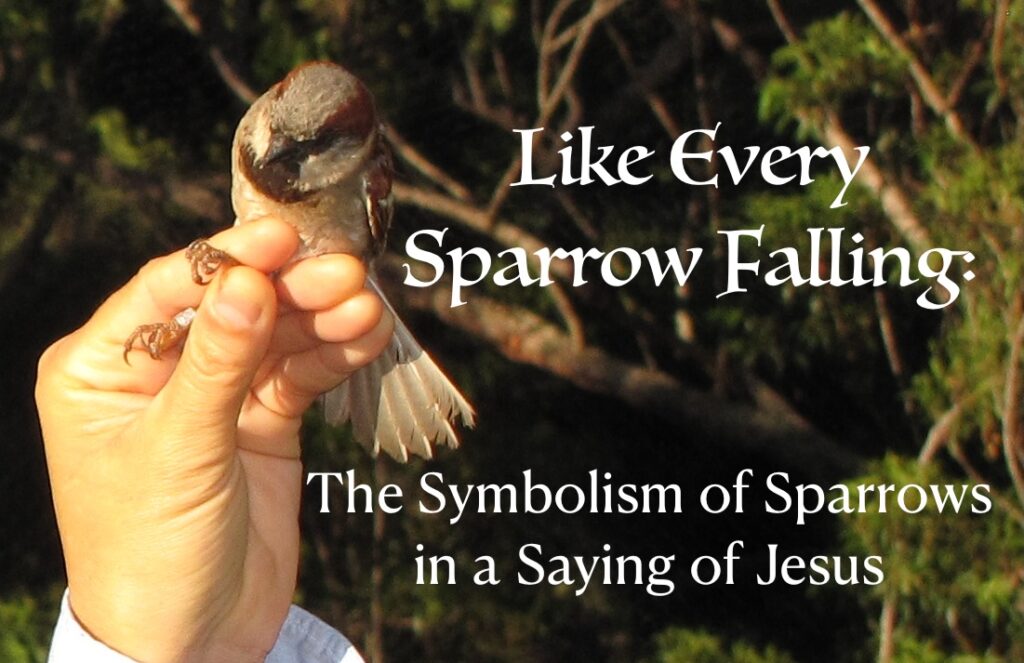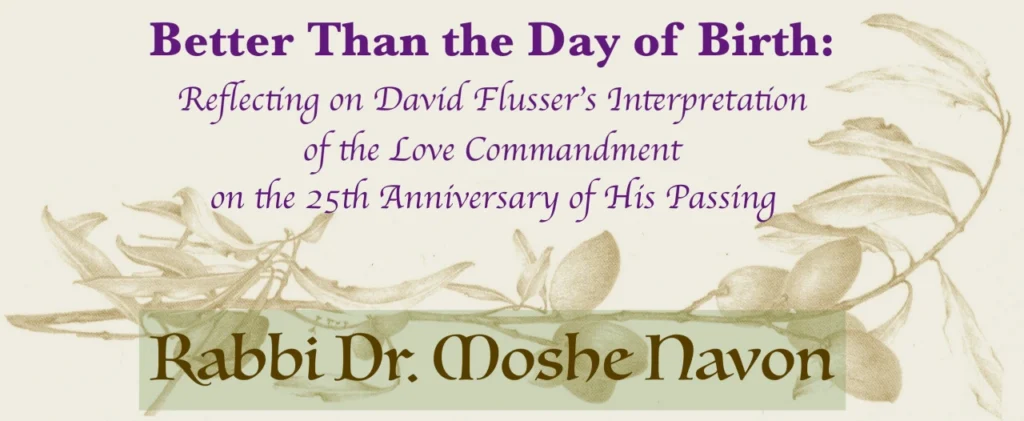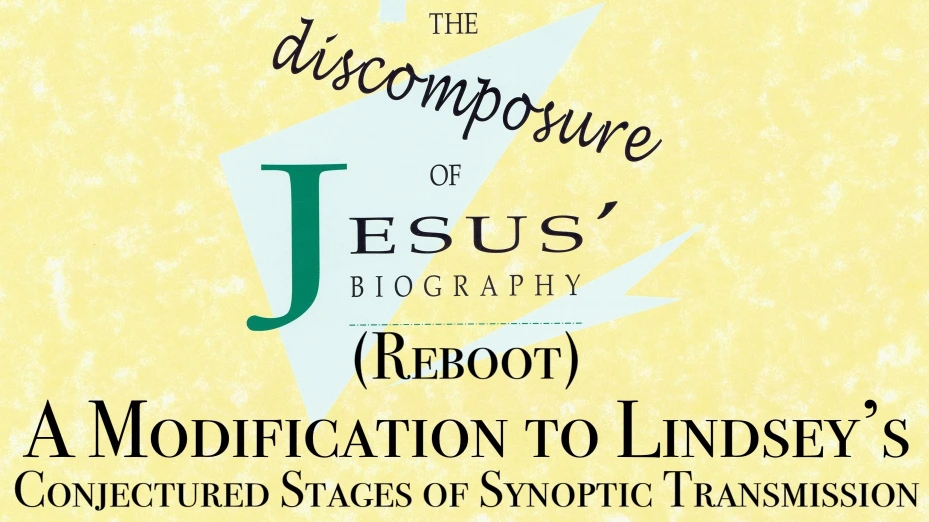How to cite this article: Joshua N. Tilton, “Did Jesus Raise Jairus’ Daughter from the Dead?” Jerusalem Perspective (2025) [https://www.jerusalemperspective.com/30887/].
| Rather listen instead? |
| JP members can click the link below for an audio version of this essay.[*]
Paid Content
Premium Members and Friends of JP must be signed in to view this content. If you are not a Premium Member or Friend, please consider registering. Prices start at $5/month if paid annually, with other options for monthly and quarterly and more: Sign Up For Premium  |
The story of Jairus’ Daughter poses readers with a problem: it is presented as an account of Jesus’ raising someone from the dead, but within the story Jesus himself insists that Jairus’ daughter “did not die, rather she sleeps” (Matt. 9:24 ∥ Mark 5:39 ∥ Luke 8:52). This contradiction requires readers to decide whether Jesus should be taken at his word or whether to prioritize the family’s reports that the girl was dead. The former option runs the risk of robbing Jesus of a spectacular miracle; the latter option risks turning the meaning of Jesus’ words on its head, thereby mocking Jesus to scorn—the very reaction the characters in the story have when Jesus tells them the girl is really just asleep.
Primed for a Miracle
There are several ways in which modern readers of the Gospels are led to suppose that the story of Jairus’ Daughter is an example of Jesus’ raising the dead. The first of these are the headings given to the pericope in various translations of the Bible. The NIV, for instance, labels the pericope as “A Dead Girl and a Sick Woman.” The New Oxford Annotated Bible edition of the RSV names the pericope “Raising the daughter of Jairus.” The HarperCollins Study Bible edition of the NRSV calls it “A Girl Restored to Life and a Woman Healed.” Such titles color a reader’s expectations even before she comes to the story.
Premium Members and Friends of JP must be signed in to view this content.
If you are not a Premium Member or Friend, please consider registering. Prices start at $5/month if paid annually, with other options for monthly and quarterly and more: Sign Up For Premium

Be sure to check out these recent JP articles:
- Синагогата и съботатаПодробното описание на посещението на Исус в назаретската синагога, което намираме в Лука 4:16–21, предоставя ценна информация за живота и обичаите в синагогата през ранния първи век сл.
- Like Every Sparrow Falling: The Symbolism of Sparrows in a Saying of JesusThe multivalent image of the sparrow in ancient Jewish thought made it a useful vehicle for conveying messages about human and divine relationships.
- Better Than the Day of Birth: Reflecting on David Flusser’s Interpretation of the Love Commandment on the 25th Anniversary of His PassingI regard the twenty-fifth anniversary of David Flusser’s passing not solely as a day of loss, but also as the day that gave him to the world.
- 25 Years Since David Flusser’s PassingProfessor Serge Ruzer shares his recollections of Israeli scholar David Flusser on the twenty-fifth anniversary of his death.
- The Discomposure of Jesus’ Biography (Reboot): A Modification to Lindsey’s Conjectured Stages of Synoptic TransmissionHow did the Hebrew biography of Jesus disintegrate into the isolated pericopae that make up the Synoptic Gospels?
- Was the Hemorrhaging Woman Jesus Healed Named Rebekah?Is it possible to retrieve the name of the woman who touched Jesus’ tzitzit?
- [1] It is difficult to translate Mark’s wording into English literally. The Greek text reads: τὸ θυγάτριόν μου ἐσχάτως ἔχει (to thū·GA·tri·ON mou es·CHA·tōs E·chei, “the little daughter of me ultimately has”). ↩
- [2] See C. H. Turner, The Gospel According to St. Mark (London: Society for Promoting Christian Knowledge, 1931), 29-30. ↩
- [3] Earlier in the story of Jairus’ Daughter the author of Matthew had used the passive participle ἐγερθείς (e·ger·THEIS) to describe Jesus’ getting up to make the journey to Jairus’ home (Matt. 9:19). ↩
- [4] Since in Luke’s version Peter was among those who laughed (only the select disciples and the girl’s parents were present when Jesus made his declaration), it appears Peter made the mistake of underestimating Jesus’ awareness twice. ↩
- [5] Pace Alfred Plummer, A Critical and Exegetical Commentary on the Gospel According to St. Luke (ICC; 5th ed.; Edinburgh: T&T Clark, 1922 [orig. pub. 1896]), 237. ↩
- [6] It is, however, the view of Plummer, A Critical and Exegetical Commentary on the Gospel According to St. Luke, 238; McNeile, The Gospel According to St. Matthew, 126; Norval Geldenhuys, The Gospel of Luke (NICNT; Grand Rapids: Eerdmans, 1951, repr. 1983), 262; I. Howard Marshall, The Gospel of Luke: A Commentary on the Greek Text (NIGTC; Grand Rapids: Eerdmans, 1978), 348; François Bovon, Luke: Hermeneia—A Critical and Historical Commentary on the Bible (3 vols.; trans. Donald S. Deer [Evangelium nach Lukas, 1989-2009]; Minneapolis: Fortress, 2002, 2013, 2012), 1:340; Geza Vermes, The Authentic Gospel of Jesus (London: Penguin, 2003), 11, and others. ↩
- [7] Having been trained in CPR, I can confidently state that lack of respiration is not proof of death. No signs of breathing and no pulse are signals to start CPR in order to keep an unconscious person alive, not signs to give up. ↩
- [8] Apuleius (second cent. C.E.) gives a more elaborate version of the tale in which Asclepiades saves an unconscious man from being burned to death on his own funeral pyre (Florida §19). ↩
- [9] Text and translation according to Christopher P. Jones, Philostratus: Apollonius of Tayana (3 vols.; Loeb Classical Library; Cambridge, Mass.: Harvard University Press, 2005-2006), 1:419. ↩
- [10] Text and translation according to Dov Zlotnick, ed. and trans., The Tractate “Mourning” (Śěmaḥot): Regulations Relating to Death, Burial, and Mourning (Yale Judaica Series XVII; New Haven: Yale University Press, 1966), 19 (Heb.), 57 (Eng.) (slightly adapted). ↩
- [11] See William L. Lane, The Gospel According to Mark: The English Text with Introduction, Exposition and Notes (Grand Rapids: Eerdmans, 1974), 197. ↩
- [12] See Joseph A. Fitzmyer, The Gospel According to Luke (AB 28A and 28B; Garden City, N.Y.: Doubleday, 1981, 1985), 1:749. ↩
- [13] See Michael Wolter, The Gospel According to Luke (2 vols.; trans. Wayne Coppins and Christoph Heilig; Waco, Tex.: Baylor, 2016-2017), 1:363-364. Far more distinguishes sleep from death than the duration before which that person will get up. Death involves the cessation of all vital functions and the onset of decay of the formerly living tissues of the body. If a person were to die moments before the general resurrection, that person would get up very soon, but nevertheless have been fully and completely dead. ↩
- [14] See Marshall, The Gospel of Luke, 342. ↩
- [15] See Alan Hugh McNeile, The Gospel According to St. Matthew (London: Macmillan, 1915), 126. ↩
- [16] People misunderstanding Jesus on account of taking him literally is a prominent theme in John’s Gospel. ↩
- [17] Pace W. D. Davies and Dale C. Allison, Jr., A Critical and Exegetical Commentary on the Gospel According to Saint Matthew (3 vols.; ICC; Edinburgh: T&T Clark, 1988, 1991, 1997), 2:132, who thought that the Lazarus story offered “a perfect parallel” to Jesus’ statement in the Jairus story. ↩









